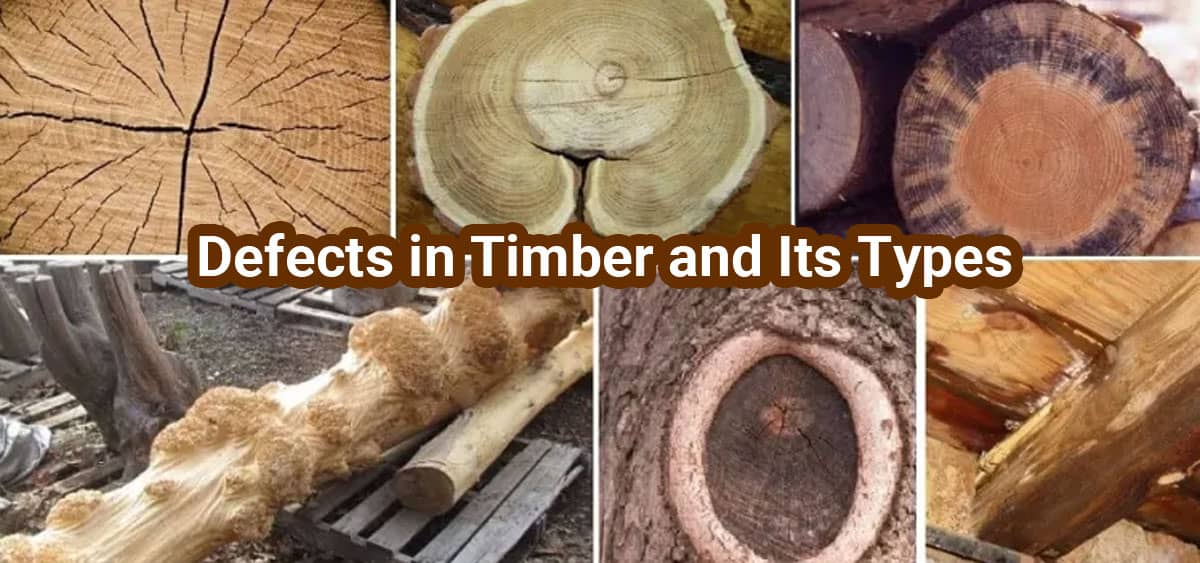Defects in Timber and Its Types
Defects in timber could also be defined as, any undesirable character -natural or artificial- that lowers its strength, durability or quality.
Defects in timber are generally distinguished as natural defects and artificial defects.

Natural Defects in Timber.
This group includes all those defects: (from an engineering point of view) that are developed during a tree during its growth.
Their development, therefore, can't be controlled by man.
KNOTS.
A knot marks the position of growth of a branch on the tree. On the cut board, it's most easily marked by its conspicuously darker appearance and harder character.
A knot is actually a discontinuity within the timber and hence an area of weakness.
SHAKES.
After knots, shakes are more serious and customary defects in timber.
In simple language, they're also called cracks or fissures. These natural cracks may result from:
- Shrinkage on aging of the tree;
- Due to movement caused by wind action within the growing tree;
- Freezing of sap within the cells during its ascent.
CROSS GRAIN.
As said earlier, fibers of the wood during a normal tree are usually parallel to the axis of growth (length of timber). This structure is named straight grained.
In some cases, however, these fibers aren't straight; they create an angle or slope with the axis of the tree, the structure is then called cross-grained.
In fact, a minor slope (of grain) could also be seen in most trees. it's going to be quite harmless. The slope of grain becomes harmful (or a defect) when it exceeds specified limits.
This is because the strength properties (especially compressive and tensile strength) are closely associated with the direction of the grain vis-a-vis direction during which the load is applied to the timber.
The slope of grain is decided easily from an easy relationship:
Slope = e / l (Where "E" is that the maximum height (above a reference plane) of a reference grain or fiber, and "L" is that the length along an equivalent plane where an equivalent fiber meets a horizontal line.)
RINDGALLS etc.
Overgrowth of timber in some parts or a tree may end in some typical defects.
A rindgall is just a highly thickened, enlarged wood cover developed over an injured a part of the tree.
It is a defect in timber because it'll need to be removed first of all for conversion of the tree.
Burr and Curl are generally developed as thickened overgrowth on junctions between the trunk and a branch or between one branch and another branch.
Such overgrowths commonly end in severe twisting of fibers within the board cut from this portion.
REACTION WOOD.
In the growing trees, strong winds commonly cause 'shaking' of the standing trees again and again.
As a reaction to such wind action, wood in these trees develops additional strength in those parts where the bending action is most severe and repeated fairly often .
In other words, within a tree, there could also be zones of normal wood and also zones of exceptionally strong wood.
These zones of reaction wood are further distinguished in tension wood and compression wood counting on which side of a bending tree they need been developed.
The reaction wood can also develop cracks. Such wood are going to be very difficult to figure with for conversion to any useful parts.
